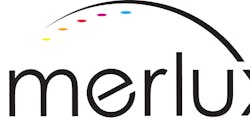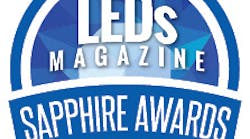A popular solution is to mount the LEDs on a metal-core printed circuit board (MCPCB). In some cases, the board has an organic dielectric material to electrically insulate the metal core.
Heatron, a company based in Leavenworth, Kansas, produces steel-core and aluminum-core boards in its Erie, Pennsylvania Thick Film Products plant. These boards utilize a proprietary inorganic porcelain dielectric material called Elpor®, which offers a number of advantages over organic dielectrics. However, the use of Elpor in thermal design has been questioned due to the low thermal conductivity value of the porcelain enamel (which is 2 W/mK). This value, in comparison, is equal or better than competitive organic dielectrics used in traditional laminated MCPCBs.
The combination of the thick-film dielectric on the metal core provides effective heat transfer, says HB Turner, executive VP of Heatron. "The dielectric helps heat get through quickly, while the metal core acts as a heat spreader," he says. Surprisingly, test data confirms that there is only a small difference between the steel-core and the aluminum-core Elpor boards. "The steel processing is a lot less expensive, so for high-volume applications steel is probably a much better option."
Thermal results
The bulk thermal conductivity of aluminum is about three times higher than that of steel (160 W/mK vs. 55 W/mK respectively). However, comparisons of high-power (350 mA) LEDs mounted on either Elpor steel or Elpor aluminum boards showed that the thermal resistance (LED case to rear of Elpor board) was only about 1 °C/W higher for steel than for aluminum.
The non-intuitive behavior of Elpor on different metal core materials is attributed to the non-linearity of bulk material properties in relatively thin metal core and dielectric coatings. Also, the test samples were coated on both sides with Elpor material, which radiates heat more evenly and more effectively than either bare steel or aluminum.
Turner says that the thermal resistance of both Elpor material systems is equal to or better than the reported thermal resistance of an MCPCB material consisting of an aluminum board with an organic dielectric.
As well as the low cost of the Elpor steel product, and the incremental improvement offered by going to aluminum, Heatron has also developed a patent-pending white surface coating for its steel boards that is non-yellowing and provides high reflectivity for increased light output.
Light engine development
"We also built the light engine incorporated into Advanced Lighting's LiveLED 100 wall-wash luminaire," says Turner. The LiveLED 100, launched at LDI, incorporates 44 Luxeon devices operating at one or three watts.
"We are going full speed in the Erie plant with new light assemblies now going into production just from the last 12 months of custom projects," says Turner. "These include channel letter assemblies, airport lighting, 3-4 projects with Honeywell Grimes, fork-lift lights, snowmobile lights, strobes, emergency vehicle light bars, the Live LED unit, and many others."









